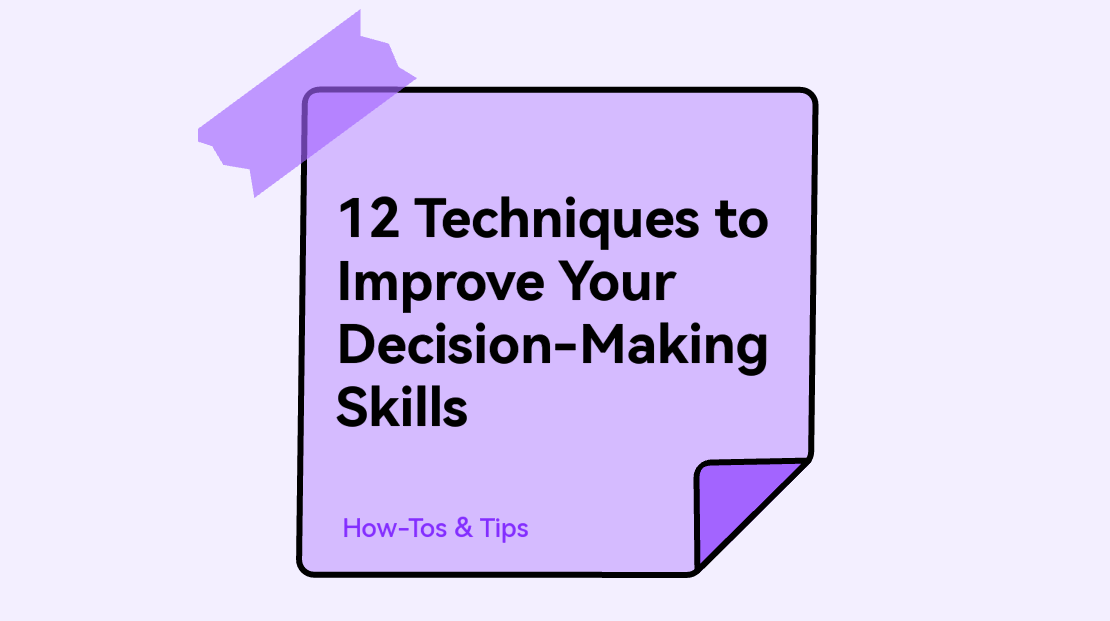In the dynamic realm of commerce, the capacity to make effective decisions is essential. With numerous variables at work and constant stress to perform, sharpening your decision-making skills can set you apart from the rivals. Mastering the art of smart decision-making not only improves personal effectiveness but also plays a significant role significantly to the overall achievement of an enterprise. From strategic decisions that shape the future of a company to daily routine decisions, the stakes are high, and the outcomes can have lasting repercussions.
This article delves into established techniques to enhance your decision-making skills, covering topics including the science behind great decisions to the significance of EI and awareness. You will learn how to assess options effectively, avoid decision fatigue, and embrace both intuition and data-driven insights. Whether you're a leader facing difficult calls or an individual looking to make better choices under stress, these tactics will enable you to maneuver through the challenges of decision-making with assurance and clarity.
Effective Methods for Improved Decision-Making
To enhance decision making skills, it is essential to employ practical techniques that encourage clarification and assurance. One effective method is to create a decision-making structure. This involves defining parameters for choices and analyzing each one against these criteria. Using tools such as SWOT matrix or decision trees can structure thoughts and facilitate a systematic approach. This not only assists in mapping potential results but also shifts attention from instinctive responses to analytical assessment.
Another important technique is to utilize mindfulness, which plays a vital role in reducing hasty decisions. By granting a moment to reflect and consider, people can define their thoughts and emotions regarding the context at hand. Mindfulness cultivates a higher understanding of biases and feelings, enabling one to detach from urgent stressors and consider implications more comprehensively. This space for reflection often leads to more deliberate choices that align with long-term objectives.
Additionally, adopting collaborative decision-making can significantly improve the standard of results. Engaging with others provides diverse insights that can highlight gaps in understanding and discover hidden options. Utilizing brainstorming sessions or consensus methods can help in arriving at outcomes more efficiently and with more agreement. Involving the decision-making process not only improves the decision but also fosters a culture of collaboration and joint responsibility.
The Role of Instinct and Affect in Decisions
Intuition often acts as a guiding force in decision making, allowing individuals to draw upon their subconscious knowledge and experiences. This intuition can surface when a person is confronted with options, providing immediate insights that are not always accessible through logical analysis. Many successful leaders credit their ability to make quick decisions to their reliance on gut feeling, which can be particularly valuable in high-pressure situations where time is limited.
Emotions play a significant role in shaping choices, influencing how we perceive situations and evaluate options. Beneficial feelings can enhance creativity and encourage risk-taking, while unfavorable feelings might lead to caution or despair. Understanding improve decision-making is vital, as it can either cloud judgment or provide clarity. Recognizing how emotions impact decision-making helps individuals navigate through complex choices with a greater sense of clarity.
However, relying solely on instinct and feeling can sometimes lead to suboptimal decisions if not balanced with analytical thinking. It is crucial to find a balance where intuitive insights are supported by data and reasoned thought. By creating a framework that integrates both emotional insight and logical reasoning, individuals can enhance their decision-making, leading to improved and assured outcomes.
Strategies to Address Decision Making Obstacles
A effective strategy to address decision-making challenges is to create a structured system for analyzing options. By designing a structured process that consists of defining the problem, exploring alternatives, and weighing the pros and cons, decision-makers can simplify complex decisions. This technique lowers the mental burden and supports in understanding the consequences of each option, resulting in more informed choices. Employing decision-making tools, such as tree diagrams or SWOT assessments, can enhance clarity and facilitate a methodical approach.
An additional important tactic is to develop emotional awareness, which enables decision-makers to manage their feelings and biases during the decision-making process. Having aware of emotional influences can avoid impulsive decisions based on temporary feelings. Engaging in mindfulness can reinforce this by fostering a deeper awareness of one's thought processes and encouraging a calmer mindset. This clarity is vital when facing high-pressure situations or when uncertainty looms, facilitating a more thoughtful and secure decision-making process.
Ultimately, seeking varied perspectives can dramatically enhance the quality of decisions. Team-based decision-making promotes the sharing of insights and experiences, which can illuminate blind spots and introduce new angles to consider. Working with a mixed group can lead to more thorough evaluations and foster consensus, making the decision not only more solid but also more acceptable. This collective approach can significantly reduce the anxiety of making the wrong choice, as the input and feedback from others create a buffer for singular decision-makers.

